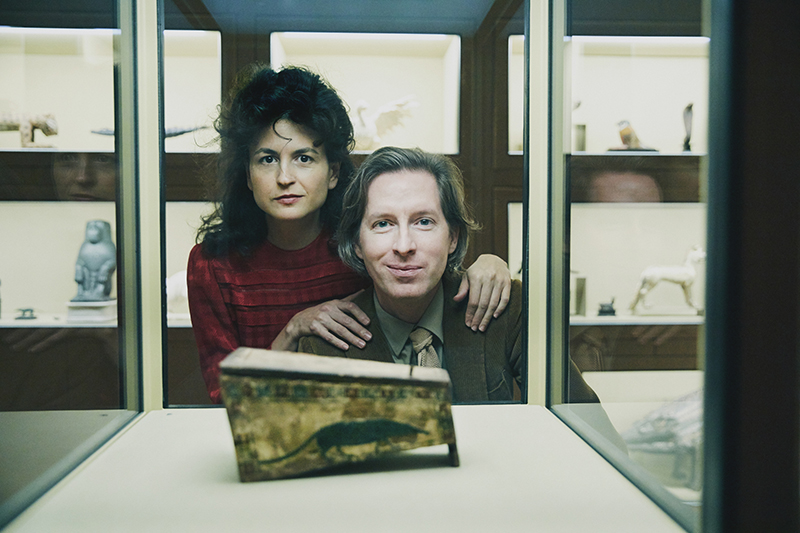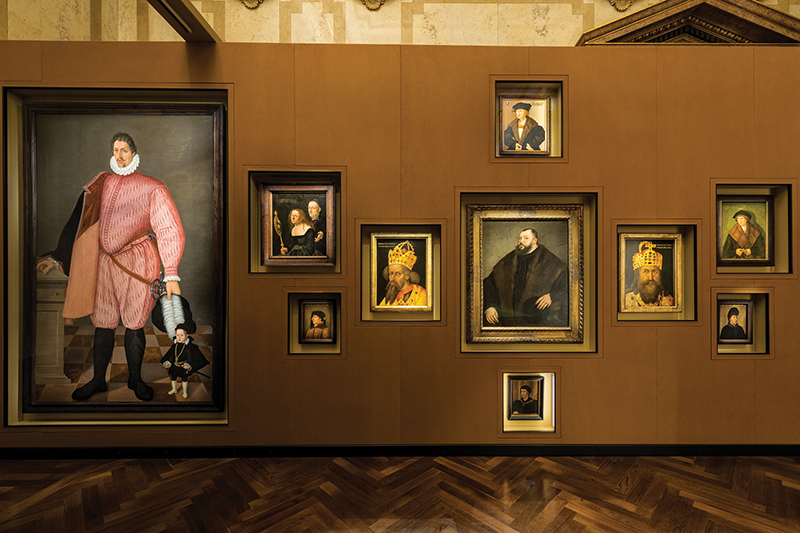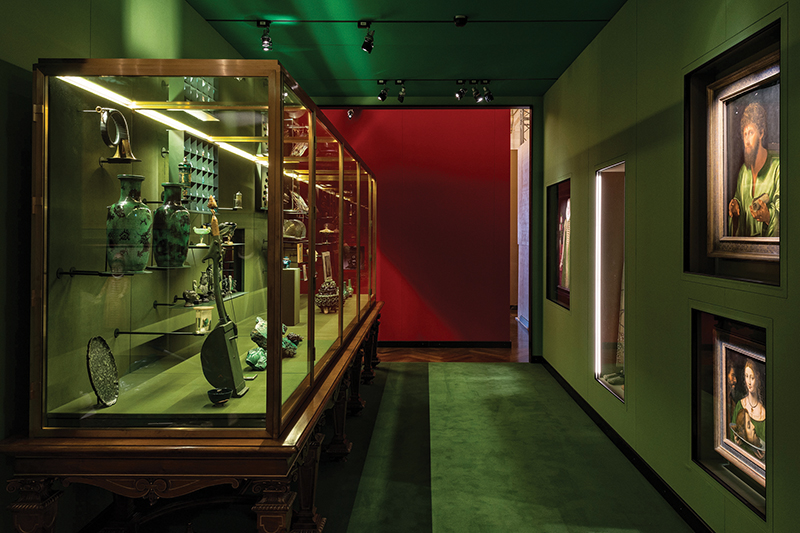Scholars be warned: Spitzmaus Mummy in a Coffin and Other Treasures, a current exhibition at the Kunsthistorisches Museum in Vienna, is not for you. If, on the other hand, you’re a fan of such films as The Grand Budapest Hotel and The Royal Tenenbaums, you just might love the show.

Wes Anderson and his partner Juman Malouf in front of the coffin of a spitzmaus, in a photograph of 2018. Photograph by Rafaela Proell, © KHM-Museumsverband.
Spitzmaus Mummy was curated by Wes Anderson, director of those quirky, atmospheric movies, and his partner, designer and illustrator Juman Malouf. The exhibition spans seven rooms, each holding a unique set of artworks and objects culled from various museums in Vienna. Complaints have been made by some critics about the lack of informational wall text accompanying the objects, and about the way the pieces within each room are displayed. Fans of the Anderson aesthetic will be pleased, however, as the rooms are redolent of the off- kilter ambiance of many of his most popular films.
Some background: the Viennese institution has an open invitation to artists to browse the collection and curate their own exhibition. The idea for such a program was sparked a few years ago when curator Jasper Sharp came upon an exhibition catalogue for the Rhode Island School of Design Museum of Art’s 1970 exhibition Raid the Icebox I with Andy Warhol. Intending to showcase the artist as curator, John and Dominique de Menil asked Warhol to devise an exhibition from RISD’s “cold storage” collection. They hoped that this would showcase the institution’s neglected works, while allowing the pieces to be reinterpreted in a less academic manner.

Room one of the exhibition. Photograph © KHM-Museumsverband.
The Kunsthistorisches Museum program kicked off in 2012 and the institution has hosted two other artist-curated shows since, including installations by painter, photographer, and printmaker Ed Ruscha and ceramist and writer Edmund de Waal. To choose pieces for their exhibits, Anderson and Malouf had access to not just the museum’s collection but also the collections of the Museum of Ethnology, Vienna, the Austrian Theater Museum, and the Natural History Museum, Vienna. Ultimately, they included more than four hundred pieces in Spitzmaus Mummy.
While not organized using the methods of a trained curator, Anderson and Malouf have applied their artistry and vision, grouping works related by a different theme—a style, or color, or type of object—in each of the seven rooms. The eccentricity of the juxtapositions they’ve made will be familiar to Anderson fans. One room contains a multitude of portraits, many of which feature an interesting or unusual looking subject—most with large heads and small bodies or viceversa. The “emerald room,” is filled with—you guessed it—all things green. Another space contains animal-related objects, among them the exhibition’s namesake, Coffin of a Spitzmaus (Shrew)—a miniature Egyptian mummy from around the fourth century BC. In addition to curating the show, Malouf made sketches of selected pieces on view, adding her own artwork to the mix.

The emerald room organized with a multitude of green objects from the cold storage of three Viennese institutions. Photograph © KHM-Museumsverband.
In Raid the Icebox’s catalogue, Dominique de Menil writes, “Like a bewitched castle in the fairytales of old, the world of art lies asleep. To break the spell unusual gifts or thorough preparation is needed. . . . If critics and scholars can open many doors, only seers and prophets open the royal gates . . . ” Though Wes and Juman are not prophets, we believe the de Menils would have appreciated the pair’s unusual gift.
Spitzmaus Mummy in a Coffin and Other Treasures • Kunsthistorisches Museum, Vienna • to April 28 • khm.at
